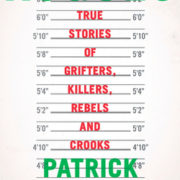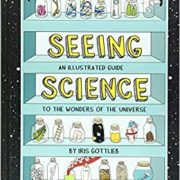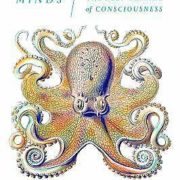Bugged: The Insects Who Rule the World and the People Obsessed with Them by David MacNeal
The First Day of Spring is but two days away: Easter Lilies, jonquils, irises, and daffodils push up through soil; buds return to trees; avid gardeners start seeds; and the cat pounces Springtime prey. Indeed, Spring is upon us. As are the allergies, the thunderstorms, and the…bugs!!! I thought I would try to appreciate these creepy-crawlies by reading David MacNeal’s Bugged: The Insects Who Rule the World and the People Obsessed with Them.
We’re introduced to bugs with a staggering statistic: “for every one of us [humans] there are roughly 1.4 billion insects.” According to MacNeal, that’s 10 quintillion bugs, approximately 7,400,000,000 humans and 10,000,000,000,000,000,000 insects. In other words, it’s a bug’s world and we’re all just living in it. It makes sense, then, that we learn about the who, what, when, where, and whys of bugs and the influence they have.
MacNeal opens his self-proclaimed cabinet of curiosities with those who breathe life into dead bugs. That is, bug taxidermists. In an Entomology Department (of a boutique) in Lower Manhattan, we learn that pinning bugs isn’t as simple as catching one and shoving a pin through. Meet Lorenzo, who’s pinned and mounted bugs for twenty-plus years. He pulls a water bug (cockroach, really) out of an overnight-soak solution. Equally appalling and interesting is that the bug was dried, packaged, and shipped from Thailand to be mounted and purchased in NYC. Lorenzo further prepares this cockroach, I mean water bug, by carefully removing its innards and otherwise making it suitable for mounting and selling. In short, it must look good—collectors like a pretty bug. Oh, the amounts of money they’ll spend to get one.
Vanity collections and collectors aside, MacNeal illustrates that all sorts of people study all sorts of bugs for all sorts of reasons. Leaving Lower Manhattan’s buggy boutique, we go underground with entomologists who study ants. We discover that their studies and modeling of ant behavior may lead to a better understanding of our own interactions with and impacts on the world. We learn how ants have influenced algorithms, specifically that of the Internet’s transmission-control protocol (TCP).
We come up for air in Colorado, where a woman works with tarantulas in a “Rearing Room” and we head to a “Mosquito Factory” in Brazil. In Brazil, we dig into the seemingly useless lives of mosquitos not unlike the way they will soon dig into us. Fun fact: Half of human deaths, since the history of humans, are attributed to mosquitos. Another fun fact: Beetles have destroyed over 60 acres of North American forests since 1994. Yet another: Because of bugs, wallpaper was once infused with DDT (which wasn’t banned until 1972).
Yet, in spite of death and decimation, bugs are, in fact, beneficial. Well, maybe not mosquitos (or fleas), but bugs spur innovation. Insects can help us become healthier, fight disease, and, according to the author, perhaps help us “end our antibacterial plight.” Not to mention the increasingly apparent health benefits of eating bugs. Seriously! ‘Micro-livestock,’ as those within the field call them, contain significantly more calcium and iron than meats commonly consumed in the Western world. Other bug benefits include “first responders” that gnaw through decay, pest-controlling insects that save billions of dollars per year in the US alone, and the positive affects bugs have had on 21st century medicine.
What I took away from this book is for every bad bug, there is a good bug. Do I have a greater appreciation for these creepy-crawlies? Uh, sure. Other than mosquitos. Lastly, I might mention that this book is not for the weak-stomached, as the author describes exterminators who allow bed-bugs to feed on themselves, symptoms of those with yellow fever, and other stomach-churning matter. Overall, the content of this book was fascinating, if at times appalling, and the writing good, if at times dense. You know, dense like the jungle. Where there are lots of…bugs!!!
As always, happy reading!











